Best XC forks: the best cross country forks for a lightweight, plush ride
The best XC forks combine smooth and controlled dampening with a lightweight and stiff design. Here is Bike Perfect's list of the best XC forks on the market

The best XC forks hover between about 100mm and 120mm of travel. Usually featuring lockout switches, XC forks are lightweight, efficient and allow the wheel to get out of the way when it needs to while offering enough support to keep you from bobbing through the travel up a tough climb.
The suspension fork changed mountain biking forever. Not only did it take some of the dampening load away from your body, but it vastly improved traction and control, allowing riders to take on rougher terrain at speed.
In the early days, suspension forks offered about 30-50mm of travel and the same fork (and bike) would be used for pedal-heavy XC riding and gravity-fed Downhill racing. Suspension forks have now become specialist components with cross-country riders demanding high performance and low weight in order to build the best lightweight mountain bikes for XCO and marathon racing.
Read on for Bike Perfect's picks for the best XC forks, or if you're new to the club, you can skip to everything you need to know before you buy an XC fork.
- Best mountain bike forks
- Best full-suspension mountain bikes for tackling the toughest cross-country courses
- Best rigid forks for mountain biking
The best XC forks
Why trust BikePerfect
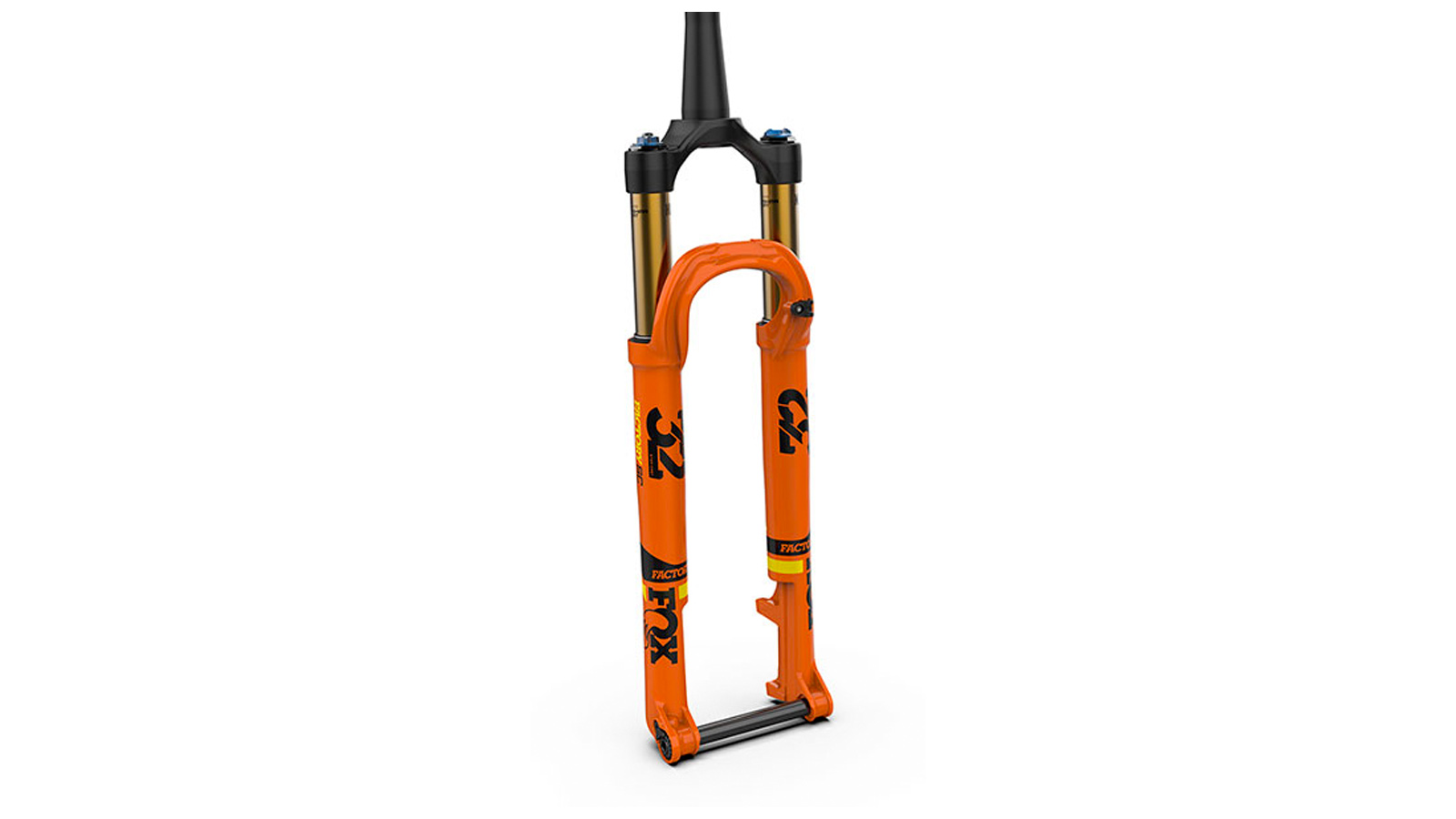
Specifications
Reasons to buy
Reasons to avoid
When Fox sought to trim weight from its short travel performance forks, it simply got rid of unneeded material. The lower third of the fork lowers is cut out, and the stance is noticeably narrower in both the Boost and non-Boost formats, which also meant less material was needed in the crown.
Weighing about 1,400g in the Factory trim for 29-inch wheels, Fox says the 32 Step-Cast is just as stiff as its burlier 34 fork. The top-end model sees the eye-catching neon orange lowers and has provisions for high and low-speed compression damping. There's also a lightweight 8mm damper shaft and a bar-mounted lockout along with a self-equalizing lightweight air spring.
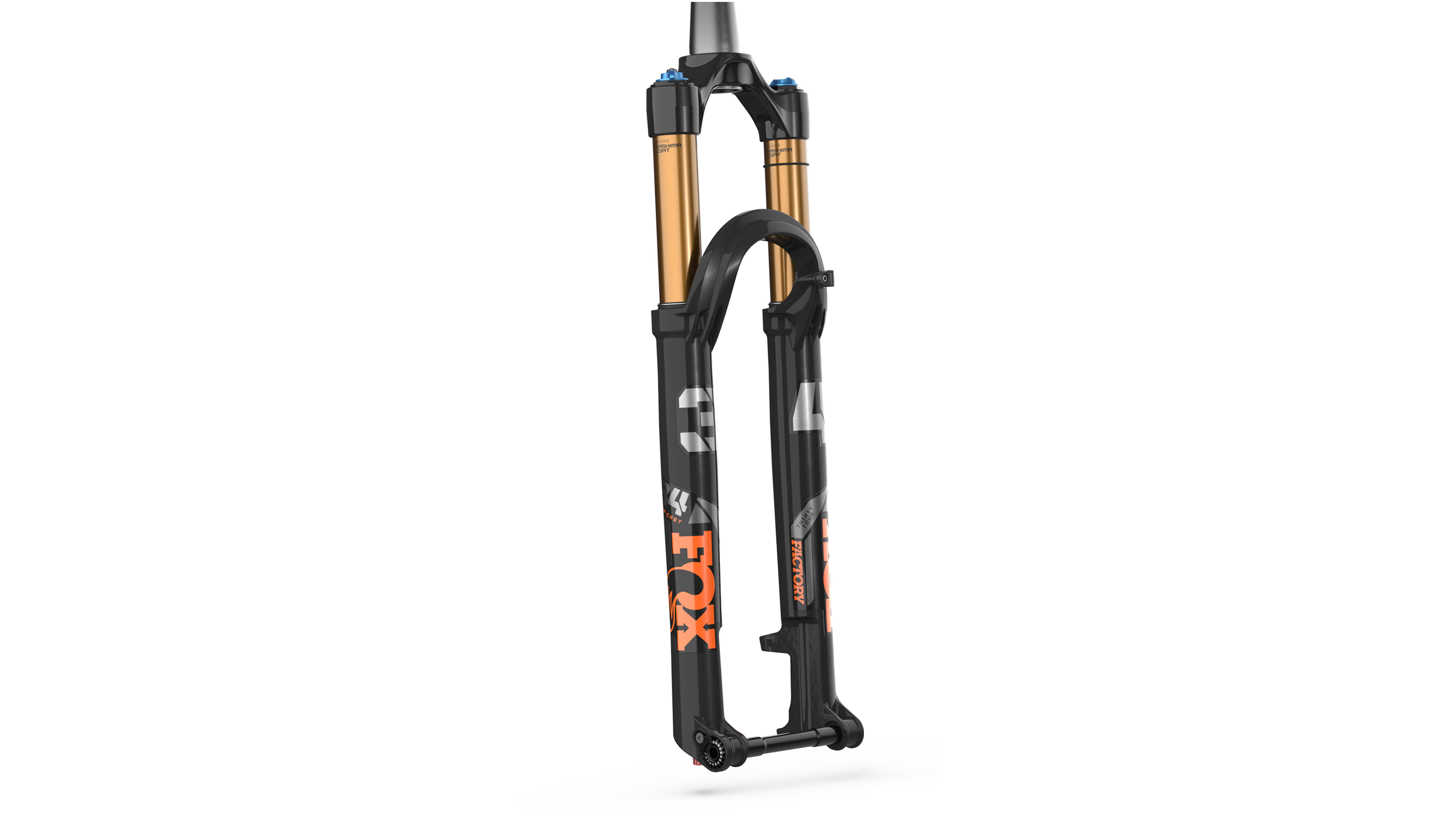
Fox 34 Step-Cast Performance
Specifications
Reasons to buy
Reasons to avoid
Cross country racing used to be all about the climbs, and the goal was just to survive the descent. With riders becoming infinitely more skilled and bike technology and geometries improving at a rate approaching lightspeed, the descents are becoming increasingly relevant to the overall equation, as well as getting increasingly technical to boot. With that, we have seen quite a few XC and Marathon racers up forking to 120mm, and even a new breed of XC bikes like the latest Trek Top Fuel, Pivot Mach 5 and Norco Threshold, which are built around a more significant suspension up front.
The Fox 34 Step-Cast follows a similar idea to its shorter travel sibling but changes things up to better accommodate the additional travel and stanchion diameter. The cutouts on the 34 Step-Cast are on the outside of the lowers, the fork also receives the same light, 8mm damper shaft. While the Performance series fork doesn't get the blinged-out Kashima treatment, they are made from the same 7000 series aluminum, and the fork sees a Fit Grip damper that combines the compression damping into a single dial.

RockShox SID SL Ultimate
Specifications
Reasons to buy
Reasons to avoid
The new SL Ultimate isn’t just RockShox’s lightest SID but the lightest 100mm telescopic fork from any brand, weighing in at just 1,320g ready to fit. That’s partly due to the heavily sculpted 32mm stanchion chassis with a machined and anodized crown replacing the single-piece carbon top of its predecessor. Top caps and lockout lever have been heavily drilled and machined to chase out every gram and the rebound adjuster is just a skinny pull-out Allen key.
The much smaller Charger Race Day damper saves the most weight (over 90g) to make it 166g lighter than the previous SID Ultimate. The mini damper and reworked DebonAir spring give a super sensitive high grip start with excellent mid-stroke support and progressive bottom out. You even get a bolt-on fender for dirty days.
It’s only available in a short offset 29er version though.
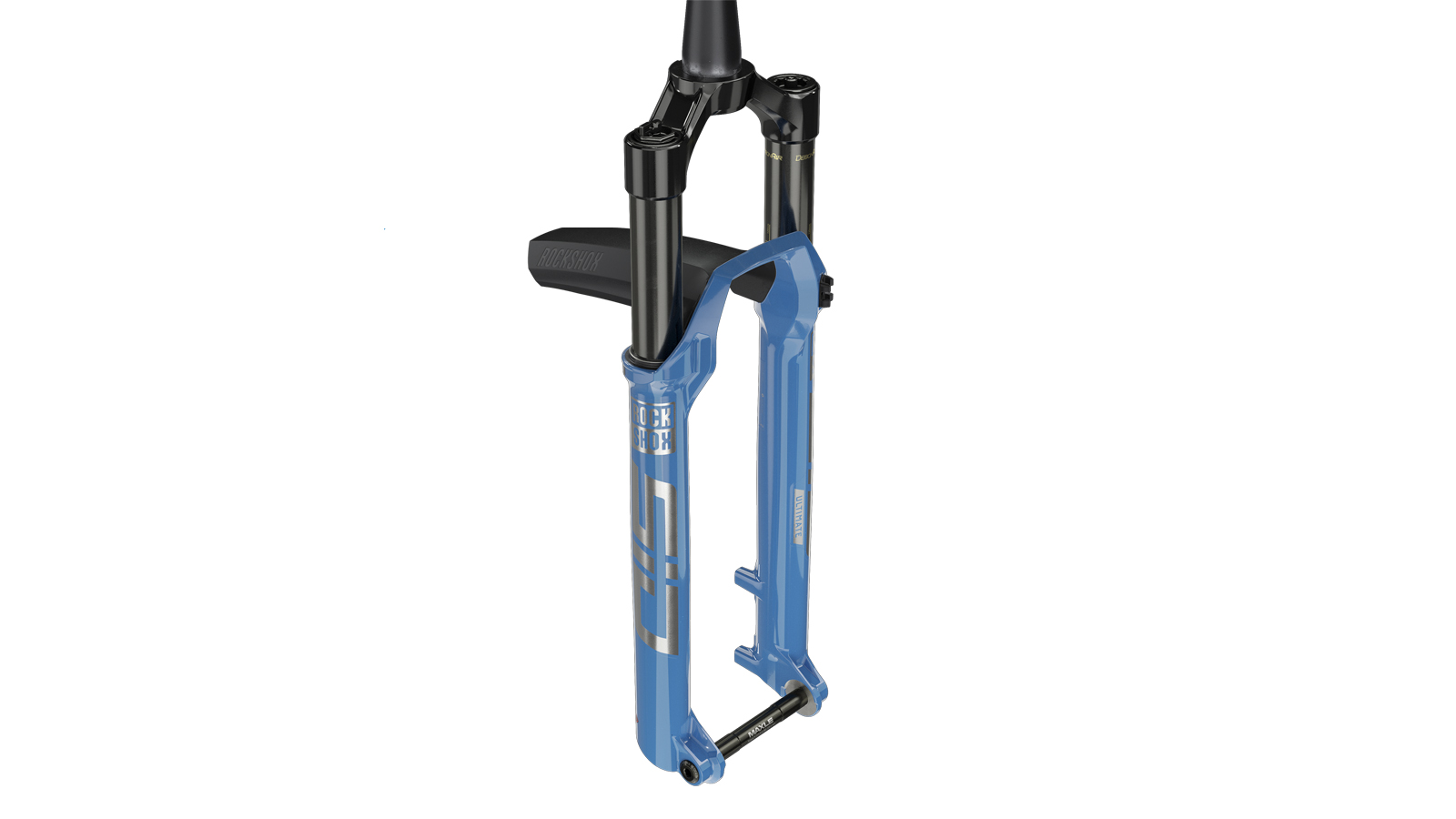
Specifications
Reasons to buy
Reasons to avoid
While the SID SL reworks the classic 32mm chassis for minimal mass, the SID now steps up to the same 35mm diameter stanchions as RockShox trail, Enduro and DH forks. That means a much stiffer, more accurate on-trail feel than the SL, but still enough compliance to boost traction and reduce fatigue. The tiny Race Day Damper and extensive machining and sculpting from lower legs to lockout lever mean it still only weighs 1,508g.
The DebonAir spring has been altered to raise the ride height of the fork, increasing stability for corners and braking and ramping up aggressively for big hits. The start is still buttery smooth to sustain speed and grip over tiring chatter bumps. The Race Day Damper is impeccably controlled, even when rallied hard. The 180mm brake mounts and optional fender make it trail-ready, and it’s got an instant bleed damper port. The Ultimate only has a hard lockout switch but not tuneable compression adjust, and it’s only available in a 44mm offset 29er format.
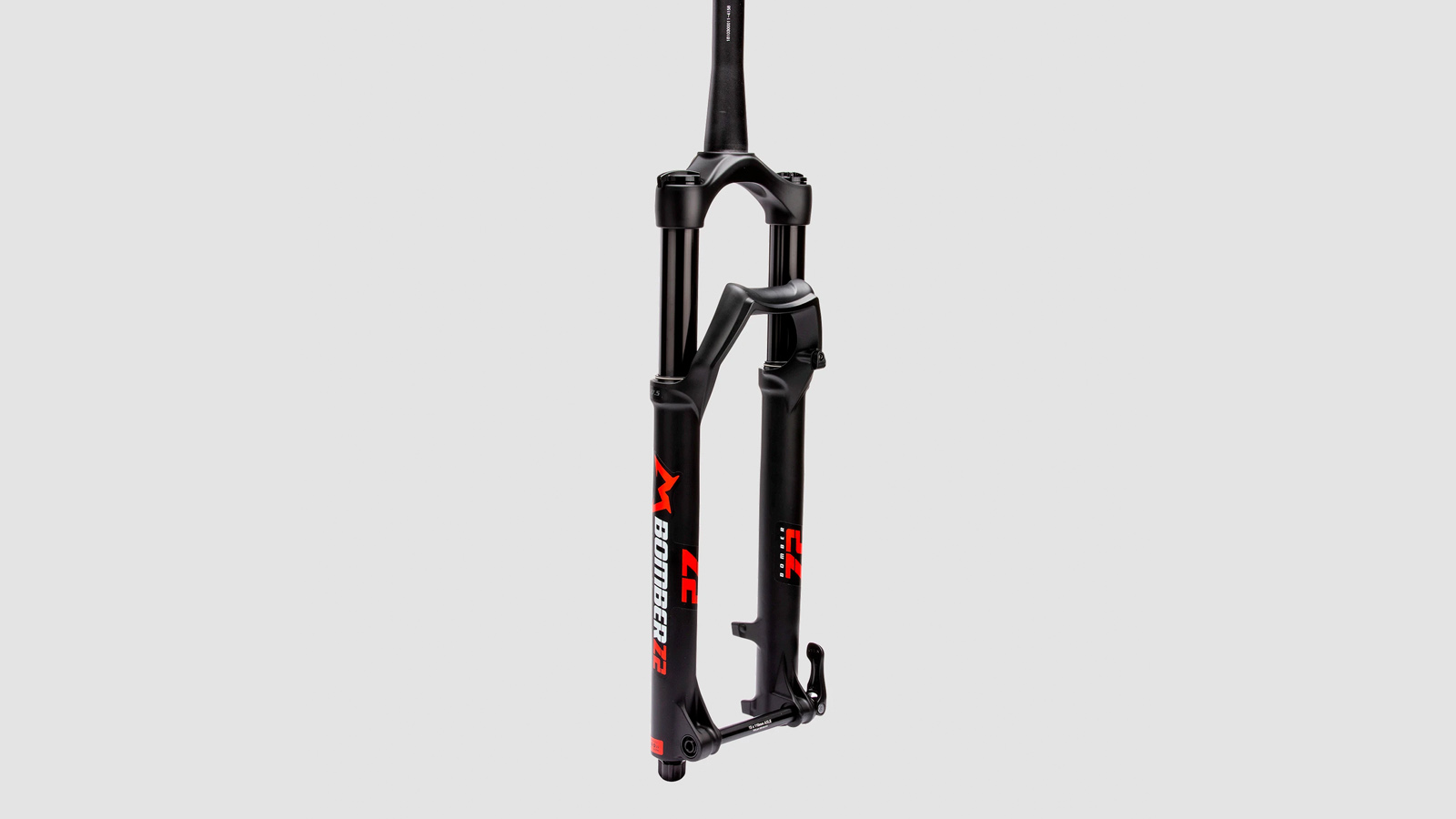
Specifications
Reasons to buy
Reasons to avoid
Fox breathed new life into the Marzocchi brand last year, sharing its damper and air spring technology with an attainable price tag. The Bomber Z2 is stripped down and doesn't have all the knobs and dials most of us never bother to turn. Unlike the Bomber Z1 which uses a GRIP damper from Fox, the Bomber Z2 gets its own Rail damper which presents reliable performance and simplified internals, so even the most ham-fisted home mechanic can service their fork.
With 34mm stanchions, the Bomber Z2 is available in travel from 100mm to 150mm, and the squish can be adjusted internally by the DIY’er — though you'll need to buy the correct length air spring shaft. It's not the lightest fork on the market, but for the hard-charging XC racer who is pushing on the descents, it's stiffer than the Fox 34 in our experience.

DT Swiss F232 ONE
Specifications
Reasons to buy
Reasons to avoid
DT Swiss’s superlight forks have been a favorite among European racers for well over a decade, and Nino Schurter won five of his World Championships and the 2016 Olympics on DT Swiss. Their popularity has always centered around excellent stiffness to weight ratios, and the sculpted uppers and boxy dropout lowers are still very accurate for its sub-1,500g weight.
The LINEAIR air spring uses a bypass valve to close off the negative spring as the fork goes from supple start to linear mid-stroke, before ramping up to control bigger hits.
The INCONTROL damping gives a LOCK setting for sprints, a hard starting DRIVE setting for climbs and a fine adjustable OPEN setting for maximum smoothness. You can choose fork top or remote lever actuation, three travel options from 100-120mm and they’re all useable with up to a 2.5-inch tire. You can only get 29er wheel and standard 51mm offset format though.
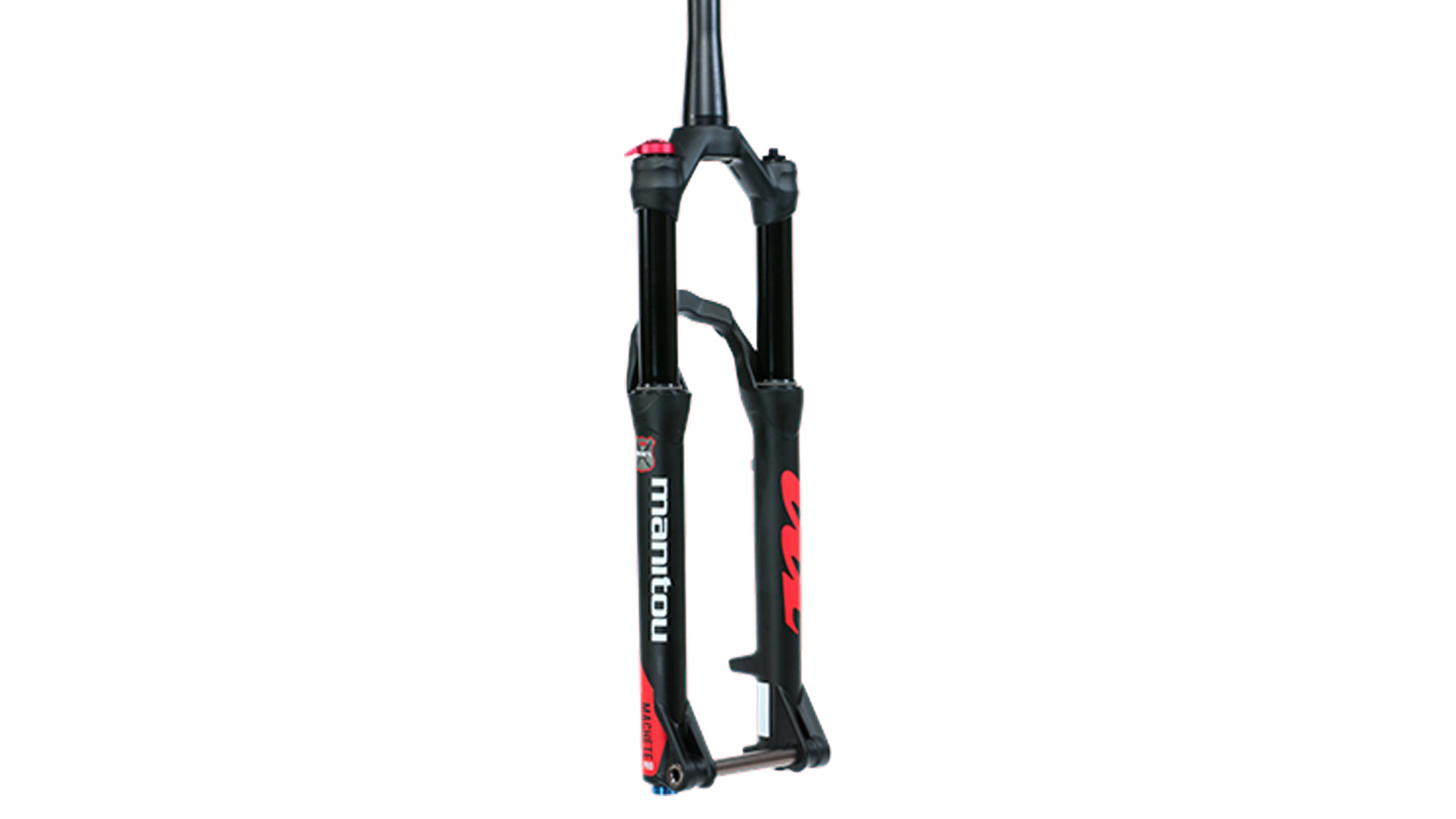
Manitou Machete
Specifications
Reasons to buy
Reasons to avoid
Like the blade that Manitou's XC fork is named after, the Machete is designed to slice and dice thick and chunky trails. With the brand's patented reverse arch, it weighs a respectable 1,885g (29in) and features external adjustments for compression, rebound, and full lockout.
There's a hollow crown at the top to save weight, and the fork features the brand's ISO air spring with a rubber bottom out bumper and ABS+ compression, along with rebound damping inside. Manitou offers the Machete in both 100mm and 120mm travel, with the squish internally adjustable by 20mm in each version.
If you are looking for lower weight, more adjustability and improved dampening, Manitou has the R7 Expert and Pro although they aren't as affordable.
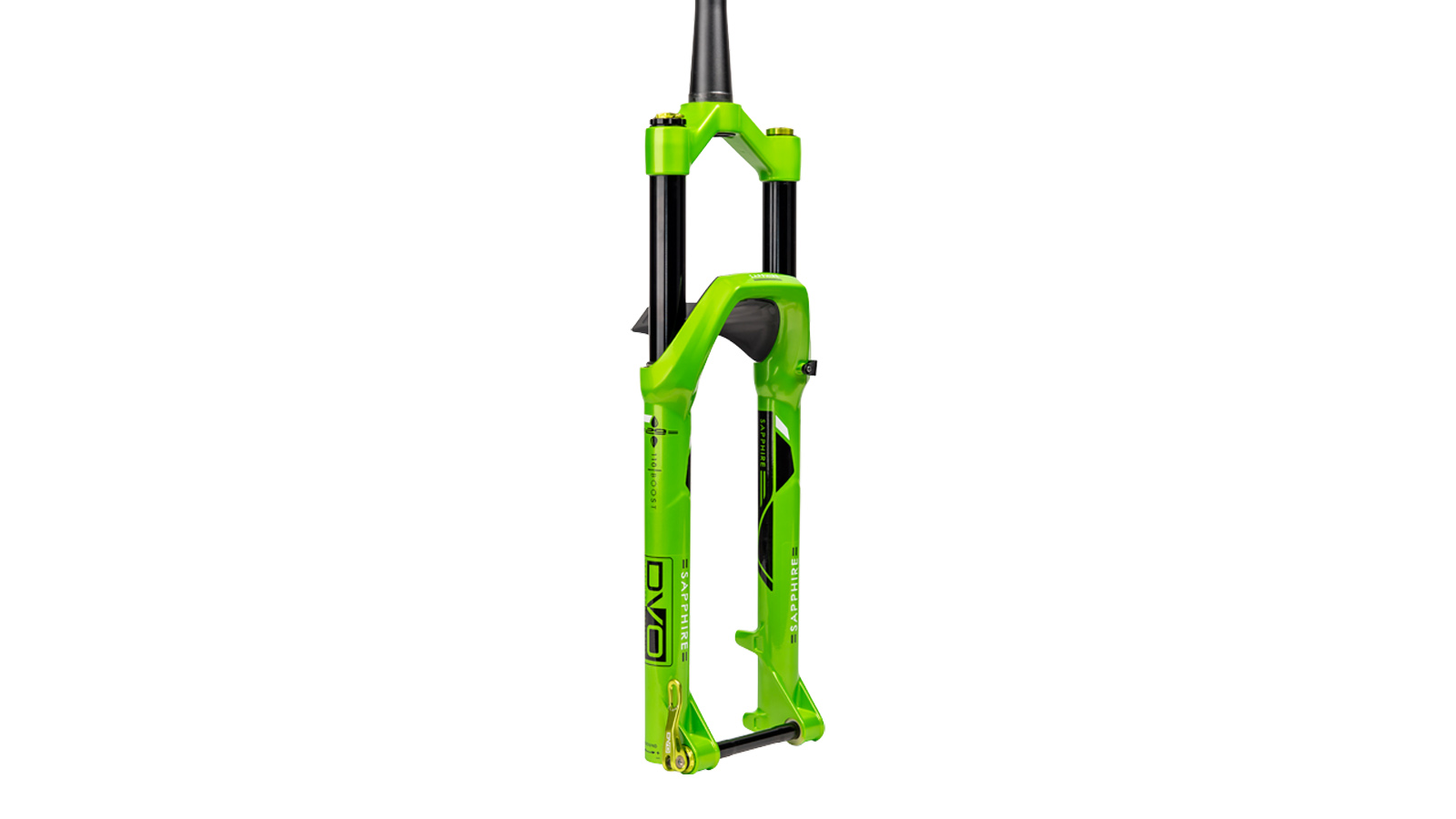
DVO Sapphire D1
Specifications
Reasons to buy
Reasons to avoid
DVO is a relative newcomer to the suspension game, and the Sapphire is the brand's XC platform touted for the bucket-loads of adjustability that’s packed into the fork. First, the travel is adjustable from 100mm-140mm with internal spacers, so you could go as far as tailoring how much squish you have depending on the course.
The Sapphire platform borrows design characteristics from DVO’s longer travel forks - like the Diamond and Emerald - to emulate not only the stiffness and tracking but also the ‘Off The Top’ and dynamic rebound adjustment. There are six clicks of low-speed compression to firm up the fork for pedaling, and over 30-clicks of high-speed compression to precisely control how the fork reacts to substantial impacts. DVO uses a shim-stack controlled rebound that controls the system based on how fast oil is moving through the fork, allowing the fork to spring back based on what the trail is doing underneath the wheels.
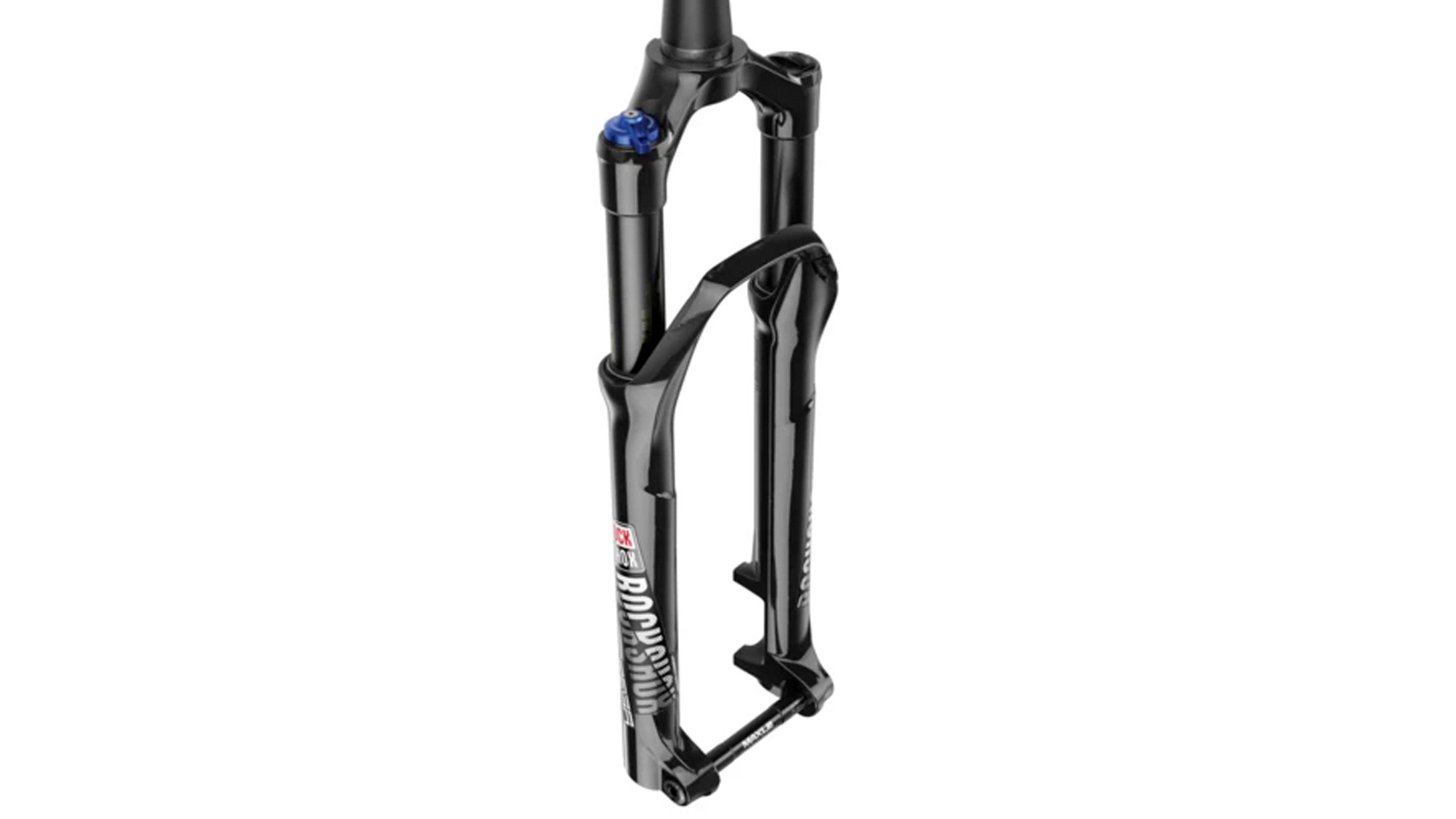
Rockshox Reba
Specifications
Reasons to buy
Reasons to avoid
Tucking in just behind the veritable SID is the RockShox Reba. In typical RockShox form, it offers adjustability and reliability, but at a price that won't relegate you to surviving on ramen noodles for the month after you buy it.
It's available in travel from 100mm to 150mm and uses 32mm stanchions, which keep the weight low and provide plenty of stiffness in the XC travel range. Being a second-tier fork, RockShox makes it for 26-inch27.5-inch and 29-inch wheels and with both straight and tapered steerer tubes. No matter the setup, the Reba RL has a Solo-Air spring that accepts Rockshox's Bottomless Tokens to increase progressivity and a Motion Control damper that provides both compression and rebound adjustment.

Lefty Ocho
Specifications
Reasons to buy
Reasons to avoid
The eighth edition of the Lefty Ocho has seen the fork go from a dual drow setup to a single crown, dropping about 250gm in the process, while actually managing to increase stiffness — quite a feat considering the rigidity of its predecessor. The fork also features 23-clicks of rebound adjustment and six clicks of compression adjustment, in addition to the air valve being moved to the side from the bottom of the fork leg.
Cannondale has continued to use its upside-down design, and the internals roll on three sets of needle bearings instead of bushings, which are claimed to significantly reduce stiction. We’re also happy to see the annoying hydraulic lockout remote has been retired for a simple mechanical version.
- Best rear shocks for mountain bikes: from XC to DH and budget to bespoke
- Best short-travel dropper posts: descend faster with the saddle out the way
- Best budget mountain bike forks: if you're looking for a cheaper option
Best XC forks: what you need to know
1. Travel
For a long time, a cross country bike had a 100mm fork, and 100mm of rear travel if it had any at all, because, for a long time, races were won on the climbs, and the descents were just about getting to the bottom without crashing.
Times have changed, and the courses are getting gnarlier, which means the bikes have had to evolve. The latest wave of XC bikes adopted slacker head angles for more confidence on the downhills, and an increasing number are specced with a slightly longer travel 120mm fork — something we’ve seen marathon racers do for some time. It's worth noting that if your bike has a 100mm fork, increasing or reducing the travel by more than 20mm will have dramatic effects on the handling.
With longer forks becoming more common on the best XC forks, 32mm stanchions are still the go-to for their weight, however, more 34mm forks are working their way into the XC travel ranges.
2. Spacing
Thru-axles provide for a stiffer connection between the fork legs and the hub and are now considered standard on just about every level of mountain bike. XC forks will take a 15mm diameter axle, and will either have standard 100mm spacing or Boost 110mm spacing.
Boost allows for wider spoke bracing angles and therefore a stiffer wheel with virtually no weight penalty. The wider hub spacing has been around for long enough that most bikes, except for those on the lowest step of the pricing spectrum, will utilize the boost standard.
3. Adjustability
Having a telescoping suspension fork is all well and good, but bolting a poorly setup pogo stick on the front of your bike will do more harm than good. At the very least, your XC fork should have an air spring as they offer far more tunability, not only through air pressure to adjust the sag, but also volume spacers to tune how the fork ramps through its travel.
Even the most budget-friendly forks also offer rebound adjustment, which is how fast the fork springs back after it's compressed. Rebound is often described in clicks because the adjuster knob literally clicks as you turn it; higher-end forks will have more clicks of adjustability, allowing for the precise tuning.
Finally, we have compression adjustment and lockout. Most XC forks will allow for some degree of compression adjustment, or at what rate the fork compresses under force; however quite a few will have a lockout switch or remote that in simple terms, turns the fork on or off.
More expensive forks will divide this adjustment into high-speed and low-speed compression. Low-speed compression helps the fork to support your weight against gravity, for example when you stand up to pedal or ride over rollers or berms but can come at the cost of small-bump sensitivity. High-speed compression is the reaction to an abrupt impact like hitting a rock or riding off a drop.
- Best mountain bike tires: your connection to the trail
- Best mountain bike wheels: the best MTB wheels reviewed
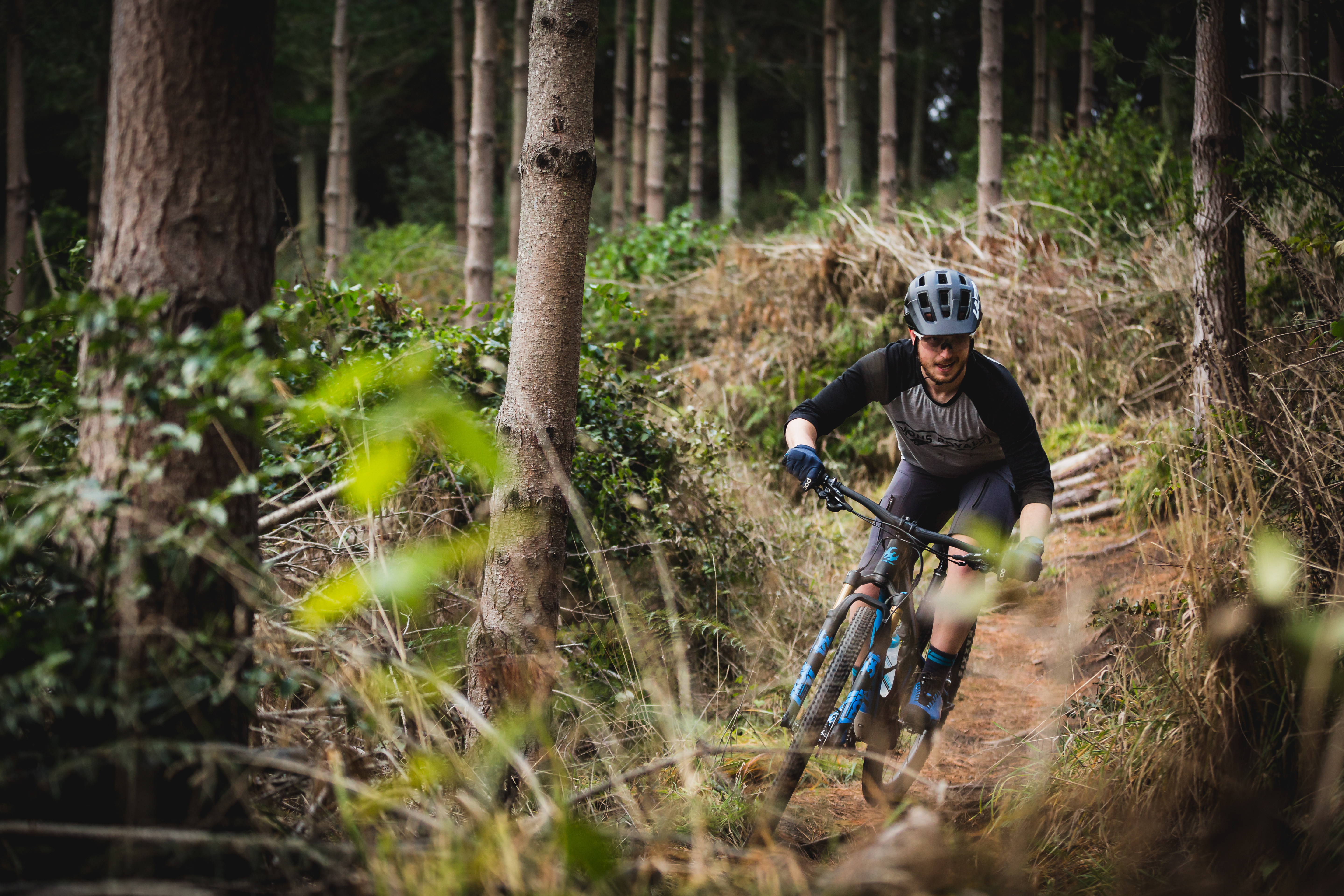
Born and bred in Colorado, and now based in Australia, Colin comes from a ski racing background and started riding as a way to stay fit through the summer months. His father, a former European pro, convinced him to join the Colorado State University collegiate cycling team, and he hasn't stopped since. It's not often he pins on a number nowadays, and you'll likely find him in search of flowy singletrack, gravel roads and hairpin corners. Colin has worked at Bikeradar and is a regular contributor to Australian Mountain Bike and Cyclist magazines.
Rides: BMC Team Machine SLR01, Trek Top Fuel 9, Ibis Ripley
